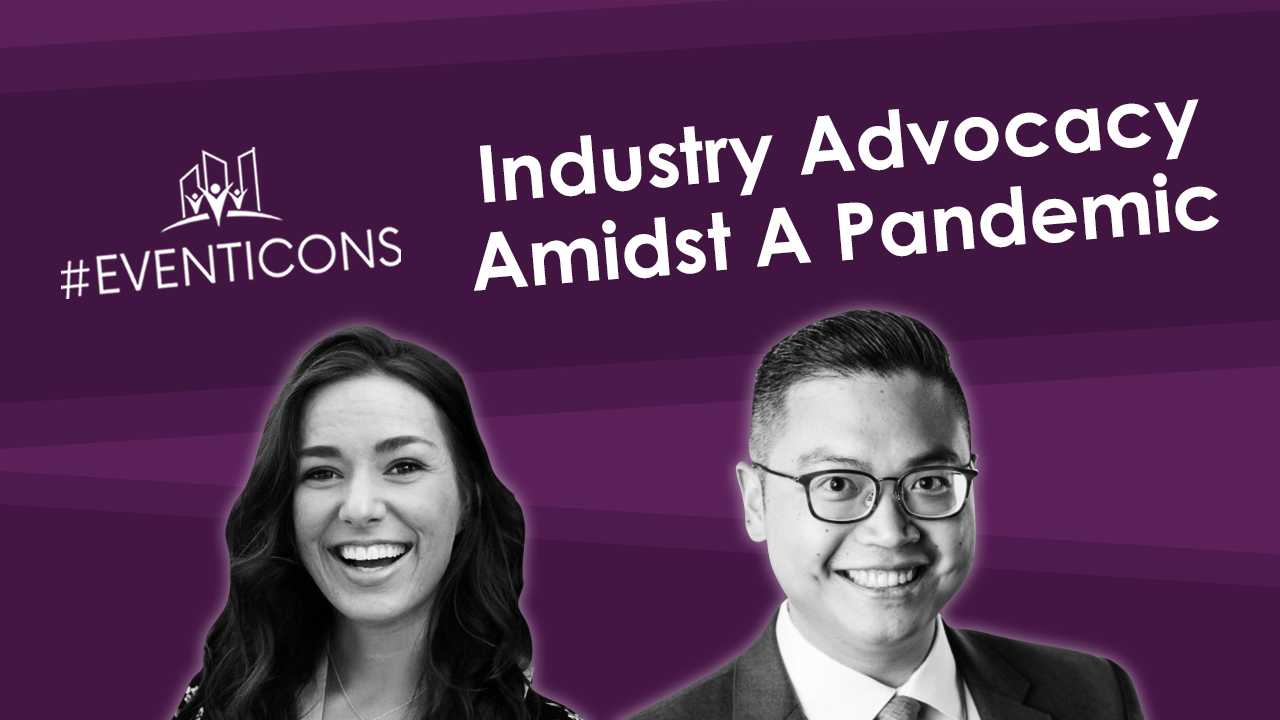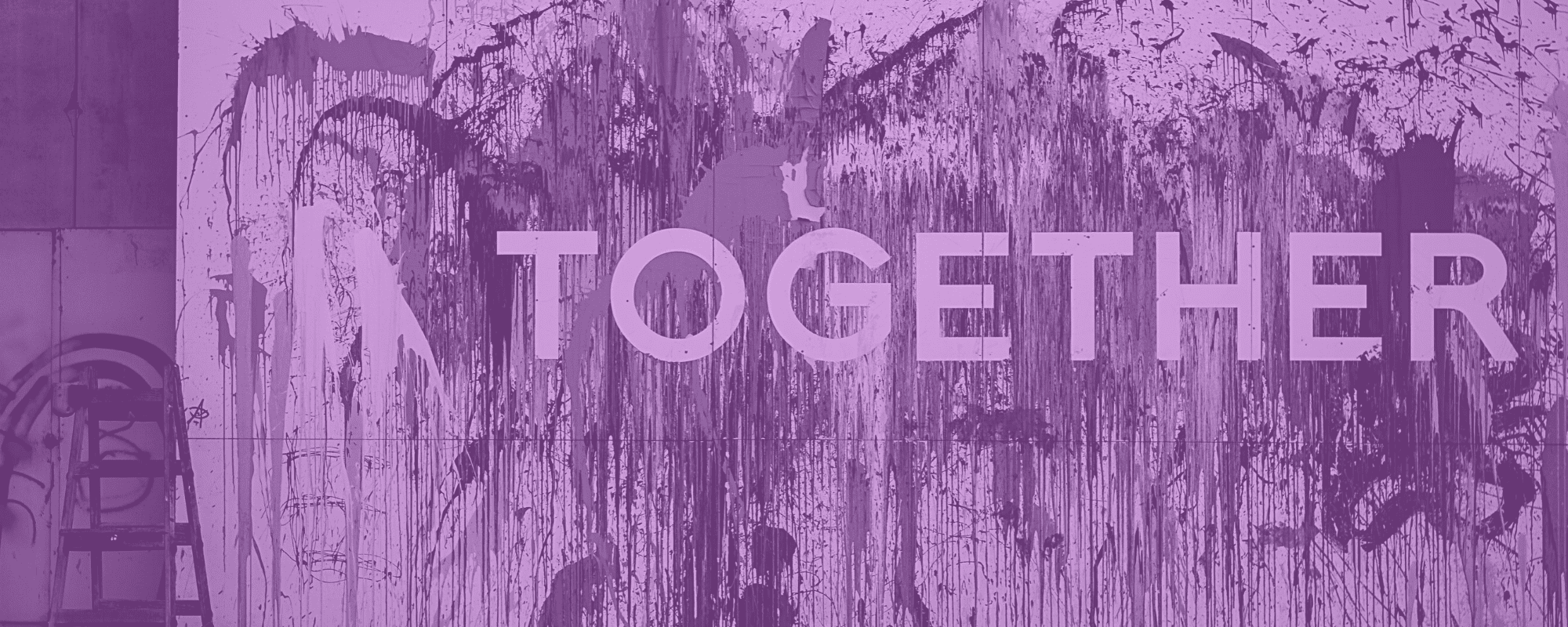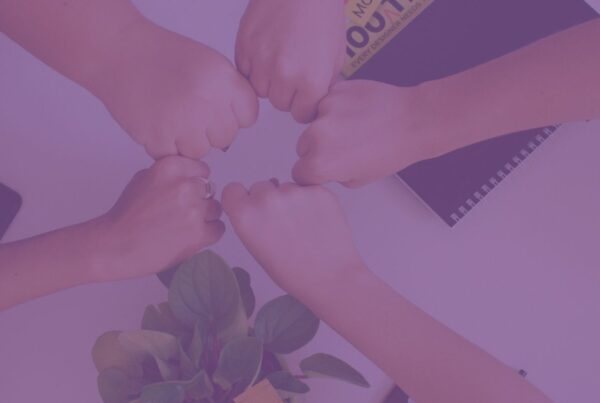How does industry advocacy during a pandemic even look like? For as long as it has existed, the events industry has struggled with unity. And it’s not because we don’t want to come together as one. But rather because we’re such a complex mix of professionals that span everything from production to catering, venues, planning, and more. Trying to define the events industry has always been a challenge. And consequently, finding unity during tough times has proven to be particularly exhausting.
But we can all agree that never has this topic been more relevant than in 2020. As one of the most affected sectors, learning how to call for industry advocacy during pandemic quickly became a hot topic. And while no one has an exact answer, our amazing guest today, Shawn Cheng of MCI, has a few ideas worth exploring. You know what time it is – it’s #EventIcons o’clock!

What Are We Doing Wrong?
Industry advocacy during a pandemic is a raging topic today. However, COVID-19 is far from being the first challenge our industry has faced. “If we take a step back, this is not unique or the first crisis that the industry is facing. In 2008, the financial crisis was equally huge, just without the global impact of the current pandemic. But what we realized is that the industry is still not really united as one industry, as we were hoping for. We all want to do something, but we don’t know what or who to ask”, explains Shawn.
“And so it’s kind of hard to really put a joint effort together. There was a lot of effort from governments to really support the industry, but a lot of the efforts were not as successful as we were hoping for. And one challenge we’re seeing right now is the government somehow sees us as white noise because we are not organized. They hear us complain and talking about how important we are. But every industry is important, right? So I think more transparency and communication are needed”.
Industry Advocacy During A Pandemic: The Mindset
“We need to change our mindset. So let’s be the solution, not the problem. Let’s think about how we can help and how we can be the solution for all the challenges that society faces right now, instead of simply being the ones who cry for help and support. But it’s hard because we were the first get hit and we’re going to be the last recover”.
“But the challenge for this industry to come together is due to the fact that this industry is such a bridge industry. So we are producing something concrete. We are kind of blending into every industry. Every industry needs some sort of meeting or event to connect. So it’s very hard to actually come together as one voice because we are not one voice”, adds Shawn.
“But we are all doing one thing, which is bringing people together and creating that connection. So this is kind of what we can do, bridge that gap. And maybe we are limited in terms of the traditional way of creating that connection, which is face-to-face. But that shouldn’t stop us because we can explore that through virtual. The engagement, the behavior is very different, but, we are doing the same thing, which is bringing people together. So don’t forget that”, he says.
Let’s Work This Out
So what actionable steps can we, as an industry, take in order to become the solution? “First is blending into what the virtual world is. I think those are the strengths that we as event professionals have, the ability actually to create that connection. And now we just need to expand our portfolio from doing that in a live environment to a digital environment, basically”, says Shawn.
“It’s still a learning process and still a walk on ice type of thing. But also I think from an industry perspective, there’s a lot of different groups. We have a very diverse industry and just a lot of groups working on different things. But I think everything comes down to one answer, which is let’s work with the government and let’s be that solution”.
For instance, Shawn is part of a group that consists of professionals from different fields within the industry. But they all came together to create a helpful guide about how to safely conduct events. “Hopefully we are able to continue collecting the case studies from everyone who read and applied the guideline. And so, therefore, we will be able to build a stronger case and show it to the government”, he explains. “So far we received very positive feedback from the government. They’re really happy to see the industry taking a step like this”.
Into The Future
“I’m actually a big believer in the power of hybrid events. And the whole reason is actually a very simple mindset. You shouldn’t have any barrier to block people from attending events like travel costs or time restrictions. Because if they want to attend your event and they will invest their time and money to attend, we should try to make it happen to them no matter where they are”.
“The virtual component gave you the ability to curb those limitations. So I think for the next year, I see hybrid events are a hundred percent going to be everywhere. So you have the live component, but you’re always going to have virtual participation. The benefit is that it gives you the ability to scale up or down”, adds Shawn.
Navigating Hybrid
“Everyone should actually have an understanding that, when we talk about hybrid events or the hybrid model, there are actually a lot of different styles of hybrid events. And that is actually the beauty of it because it’s actually quite exciting and there are so many different ways that you can operate it. We already see that from many associations, with many event organizers trying different things”, he says.
“My suggestion actually is, first of all, actually go back to the basics. Everyone just sit down with your team or with your client and ask the questions that you think you already know the answer to. Why are you doing it? What is your mission statement and why does it exist? Who is attending, why they are attending, and in today’s environment, is there still a reason that it needs to exist? What is the value proposition of this event?”, adds Shawn.
“I’m a big believer in defining yourself first. You need to do the soul searching first before you actually go into planning anything else. Then the next part is you build a framework, in the environment we are in, what makes the most sense to achieve what we want to achieve? I will encourage you guys to challenge yourselves. This is where innovation comes into play. Maybe there is a new way of doing hybrid events that will make the most sense for your audience. Because you know your audience more than anyone else”.
“And then you come into the meat of it, which is having the technical team in place. Don’t limit yourself, don’t be hesitant to ask your partners, suppliers, vendors for ideas. Have a conversation with them, co-create the whole experience with them and you will find this is actually not as hard as you think”.
Conclusions
Industry advocacy during a pandemic might be a new concept. But coming together as one, as a united force, has been something on everyone’s minds for years. So let us use the challenges of today in order to become stronger tomorrow – as an industry, but also as professionals and humans who care, and always will care, about the wonderful world of events.










